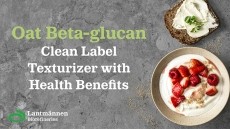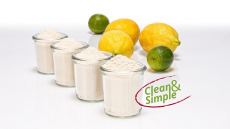Instant emulsions: Researchers aim to reduce industry costs with freeze dried sauces and dressings
The study – published in LWT - Food Science and Technology – investigated and characterised the best methods to produce a microencapsulated food emulsion using various polymers, including alginate, arabic gum and maltodextrin.
The team, led by Kelly Silva from the Universidade Federal do Rio de Janeiro, Brazil, suggest that the findings of their research could be used to produce new products that can be easily freeze dried in order to increase the stability and shelf life of sauces and dressings during transport and storage.
“An instantaneous food emulsion was formulated containing olive oil and lemon juice using combinations of polymers ... aiming at the development of a new microencapsulated product,” explained the researchers.
“This study shows that it is possible to microencapsulate emulsion oil in water by freeze-drying to use an instant sauce salad,” they add.
Freeze dried dressing
In the new research Silva and her colleagues noted that most edible oils are chemically unstable and susceptible to oxidative deterioration, especially when exposed to oxygen, light, moisture, and high temperature.
“That oxidative degradation result in a loss of nutritional quality and a development of undesired flavours, affecting shelf stability and sensory properties of the oil.”
The team explained that the encapsulation of the dressing by freeze drying “aims to increase the stability of this food by decreased activity of water, contributing to the reduction of weight and density of the product and reducing costs in transportation and storage.”
Study details
Silva and her co-workers created several food based emulsions containing olive oil and lemon juice. The team used combinations of polymers, including alginate (ALG), arabic gum (AG), maltodextrin (MD) and carboxymethyl cellulose (CMC), before freeze-drying the emulsion to test the characteristics of the dried and encapsulated emulsion.
The team revealed that mixtures of maltodextrin and arabic gum showed the lowest average values of particle size.
“The particle size was smaller and its surface was homogeneous. Moreover, the X-ray diffraction showed that these samples were amorphous.”
They concluded that arabic gum in combination with maltodextrin was the better mixture for microencapsulating emulsion with 50% v/v of olive oil/lemon juice, by freeze-drying.
“Although most studies use the microencapsulation of oil for spray drying, this study had good results for microencapsulated emulsion by freeze-drying using mixtures of maltodextrin and arabic gum.”
Source: LWT - Food Science and Technology
Published online ahead of print, doi: 10.1016/j.lwt.2012.08.005
“Olive Oil And Lemon Salad Dressing Microencapsulated By Freeze-Drying”
Authors: Kelly A. Silva, Maria Alice Z. Coelho, Verônica Maria de A. Calado, Maria H. Rocha-Leão
























